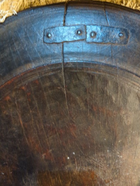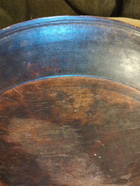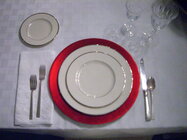-
Congratulations to Phil Hamel winner of the April 2025 Turning Challenge (click here for details) -
Congratulations to Steve Bonny for "A Book Holds What Time Lets Go" being selected as Turning of the Week for 28 April, 2025 (click here for details) -
Welcome new registering member. Your username must be your real First and Last name (for example: John Doe). "Screen names" and "handles" are not allowed and your registration will be deleted if you don't use your real name. Also, do not use all caps nor all lower case.
You are using an out of date browser. It may not display this or other websites correctly.
You should upgrade or use an alternative browser.
You should upgrade or use an alternative browser.
Guess they do still make them like they used to.
- Thread starter Sam Fleisher
- Start date
Thats quite a museum piece and character it has plenty
And I guess even then they made them so you couldn't see how they were mounted.
You can see the tool marks so obviously something spun it around. Pole lathe back then?
I don't know if that would have been considered "fine" dining ware of the time but the repair certainly is primitive. So I don't feel bad about some of the questionable looking repairs I do.
Makes a person wonder if anything I make will be around in a couple of hundred years and will my repairs have held? (probably not)
Although whoever made that probably thought the same way and would be shocked at the value now.
You can see the tool marks so obviously something spun it around. Pole lathe back then?
I don't know if that would have been considered "fine" dining ware of the time but the repair certainly is primitive. So I don't feel bad about some of the questionable looking repairs I do.
Makes a person wonder if anything I make will be around in a couple of hundred years and will my repairs have held? (probably not)
Although whoever made that probably thought the same way and would be shocked at the value now.
Last edited:
- Joined
- Apr 27, 2004
- Messages
- 9,168
- Likes
- 5,779
- Location
- Lakeland, Florida
- Website
- www.hockenberywoodturning.com
Maybe.Pole lathe back then?
But there were lots of lathes powered to continuously turn in the 1700s
Water wheel power was in use in factories. I think it started in the Middle Ages.
Treadle lathes were in use in the Middle Ages
If you were stuck in flat land.
The great wheel lathe was well known in the 1700s. It meant the turner could move about while an assistant kept the big wheel turning.

Tools of the Trade: The Great Wheel Lathe
T he great wheel lathe is arguably the most conspicuous tool in our pre-industrial wheelwright shop. A day seldom goes by without visitors i...
Yes as Hockenbery shows, the turning of heavier pieces was often done by craftsmen, one offs or maybe a series of pieces.
Basically before my time, but because of the war anything and everything was hauled out of the corners and used, repaired and renewed and so I was there as a kid to look and see what was done to repair things.
Wooden wagons were fixed the wheel rings shortened, heated and replaced.
Hubs were fixed or new ones turned, spokes and rotted parts were renewed.
So in our blacksmith shop there ware repairs done and at the wagenmaker/wheelwright there was new parts or whole new wagons made.
To turn the heavy wheel hubs they used a large wagon wheel with a belt running to the lathe, one person rotating the wheel and the wheelwright doing the turning, iron rings where fitted on the hubs and a tapered cast iron bearing sleeve fitted in the hub.
So yes simple stuff but you did have to know the how and what, plus often improvising, just make it work!!
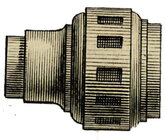
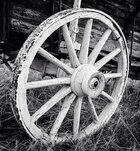
Basically before my time, but because of the war anything and everything was hauled out of the corners and used, repaired and renewed and so I was there as a kid to look and see what was done to repair things.
Wooden wagons were fixed the wheel rings shortened, heated and replaced.
Hubs were fixed or new ones turned, spokes and rotted parts were renewed.
So in our blacksmith shop there ware repairs done and at the wagenmaker/wheelwright there was new parts or whole new wagons made.
To turn the heavy wheel hubs they used a large wagon wheel with a belt running to the lathe, one person rotating the wheel and the wheelwright doing the turning, iron rings where fitted on the hubs and a tapered cast iron bearing sleeve fitted in the hub.
So yes simple stuff but you did have to know the how and what, plus often improvising, just make it work!!


Back to the original post, what is/was a "charger" please.


